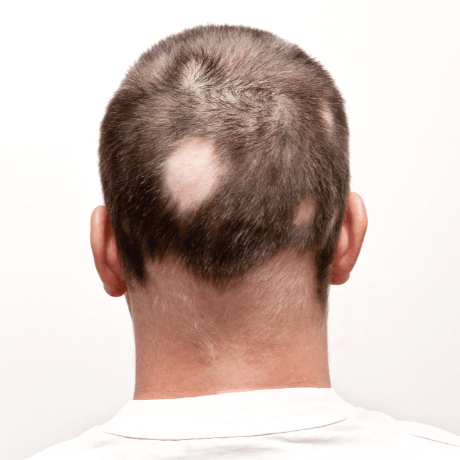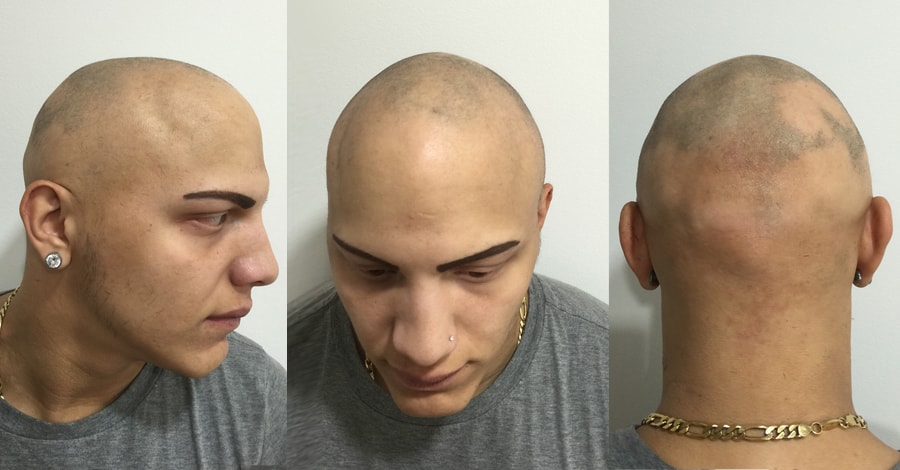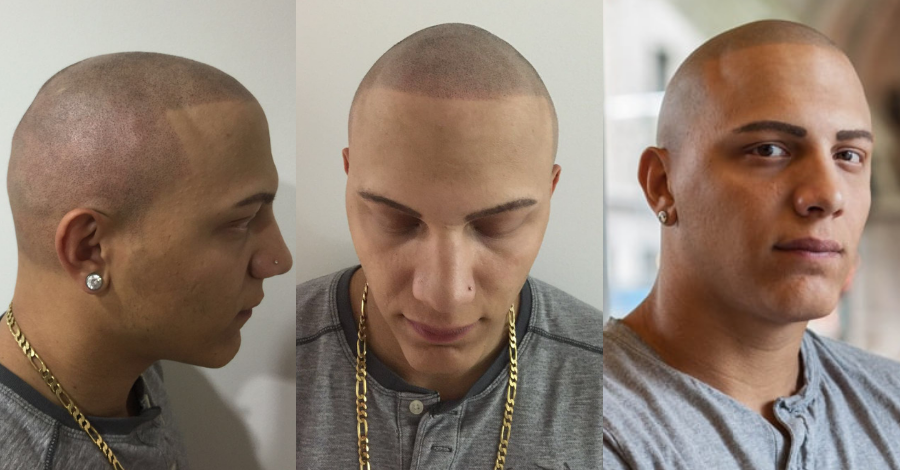Probably the most well-known form of alopecia is alopecia areata. But did you know there are actually four different types of alopecia?
The different types of alopecia
- Alopecia areata affects both genders and is apparent across all ethnicities. About 50% of cases tend to start in childhood. Symptoms are usually small bald patches often linked to burning and prickly sensations in affected areas.
- Alopecia totalis is not so prevalent and affects 5% of patients with autoimmune hair loss. Whereas alopecia areata remains as bald patches, areata totalis has much more drastic effects and leads to all or nearly all of the scalp hair being lost. It only affects hair on the scalp.
- Alopecia universalis is very much like areata totalis but it affects hair on the whole of the body leading to complete baldness. It affects less than 1% of cases.
- Diffuse alopecia areata (sometimes called alopecia areata incognita) presents, as may be expected, with diffuse thinning of scalp hair. Perhaps the clearest symptom is the colour of the hair changes very rapidly and it can appear as if the hair has turned grey overnight.
What could cause the onset of alopecia?
Alopecia is classed as an autoimmune disorder which means for some reason, in trying to defend itself against unwanted invaders, the body attacks itself. In this case it attacks the hair follicles. Alopecia causes include:
- Viral infection
- Trauma
- Hormonal change
- Emotional/physical stressors
What are the three stages of alopecia areata?
Patchy alopecia areata has three stages:
- Sudden loss of hair
- Enlargement of bald patch or patches
- Regrowth of hair
Other problems associated with alopecia areata
Because this is fundamentally an autoimmune problem, medical professionals should also check for atopy, vitiligo, thyroid disease, and other autoimmune conditions. As its presentation my well affect the victim socially and psychologically, there is also a prevalence of anxiety and depression in patients.
Treatments for alopecia areata
Topical treatments are especially useful in treating patients with alopecia areata:
- Potent or ultrapotenttopical steroids
- Minoxidil solution or foam
- Dithranol(anthralin) ointment
Injections of triamcinolone can be effective and intravenous steroids can lead to temporary hair regrowth. Also lipid lowering agents such as simvastatin and ezetimbibe have also been known to be successful. JAK inhibitors (such as oral tofacitinib and oral ruxolotinib) also can have good results.
Cosmetic treatment for alopecia
Scalp Micro Pigmentation offers a great service for people struggling with hair loss or who just want to join the buzz cut trend and look their very best. Trained practitioners apply pigments to the scalp so it appears as if you have a full head of hair – but cut fashionably short.
It can restore even a completely bald head to look like a full head of shaved hair. Visit our gallery for treatment examples of alopecia treatments. SMP treatment can cure the effects of dealing with hair loss without surgery, drugs or side effects.
Alopecia Areata Before Scalp Micropigmentation Treatment
Alopecia Areata After Scalp Micropigmentation Treatment
Watch Joeys Scalp Micropigmentation Journey on Youtube.




